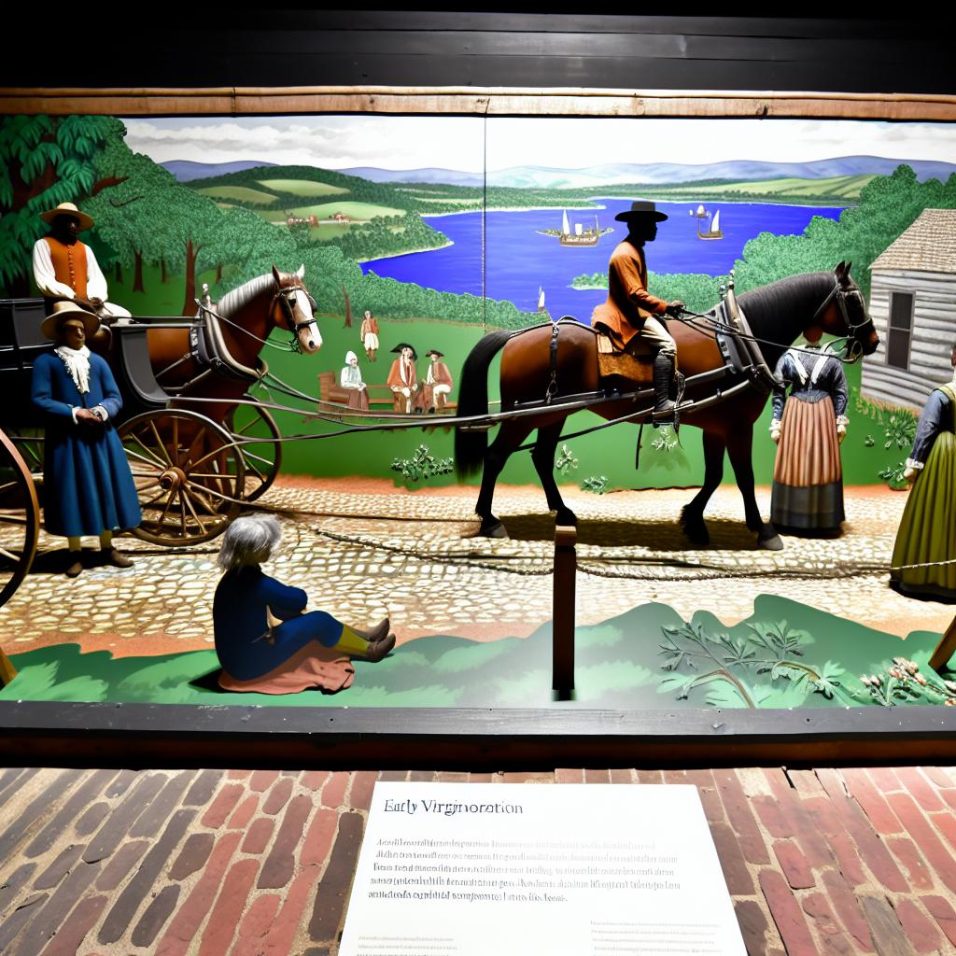The Role of Horses in Virginia’s Early Transportation
In the early days of Virginia, prior to the advent of modern vehicles, horses were not only fundamental to the region’s transportation system but also crucial in the development of commerce and daily life. These animals were more than merely utilitarian; they were embedded within the social, economic, and cultural fabric of the time.
Horses as Essential Transport Animals
During Virginia’s colonial period, horses emerged as the primary means of land transportation, pivotal due to their versatility and agility. They were harnessed for a myriad of functions ranging from agricultural tasks such as pulling plows to facilitating vital communication between distant settlements. The development and strategic planning of early roads and paths were significantly influenced by the necessity to accommodate horse traffic.
The utility of horses in agriculture cannot be overstated. Not only did they pull plows and help in preparing fields, but they also played a critical role in transporting crops from farms to marketplaces. Their strength allowed settlers to maximize their agricultural output, significantly contributing to the colony’s prosperity.
Establishment of Roads and Pathways
Horses were a driving force in the development of transportation infrastructure in Virginia. Many of the early trails in the region were initially blazed by Native Americans and were later adapted by European settlers to support horse-drawn carriages. As the need for more robust routes increased with the growth of settlements, these trails were expanded, setting the groundwork for a more structured road network. These roads were unlike the paved surfaces we are familiar with today; instead, they were usually dirt paths, whose width, durability, and navigability were often contingent upon the prevailing horse traffic.
Postal Service and Communication
The establishment of the postal service in Virginia was heavily dependent on the use of horses. As the primary mode of transportation for mail carriers, horses revolutionized the way communication was conducted across long distances. Fast communication was achieved through a relay system where riders, upon reaching specific points, exchanged tired horses for fresh ones. This system enabled mail carriers to traverse vast distances at greater speeds, ensuring that messages and goods were delivered efficiently and expediently, a crucial factor in the burgeoning economic landscape of early Virginia.
Economic Impact and Trade
Beyond their transportation function, horses had a profound economic impact in Virginia. Their capacity to transport goods efficiently made them indispensable for trade, helping to establish and grow markets and trading centers across the colony. This included the movement of staple agricultural products, textiles, and other essential commodities that contributed significantly to the colony’s economy.
The establishment of a vibrant trade network was heavily reliant on horse-drawn transport, which facilitated the swift movement of goods between farms and markets and between different towns and ports. This ability to move goods quickly and efficiently led to a thriving commerce system that was crucial for the economic development and sustainability of early Virginia.
Cultural Significance
Horses were not merely economic or utilitarian assets; they were steeped in cultural significance for the early Virginians. Equine races and exhibitions were seen as popular social events that drew significant public interest, serving both as a form of leisure and a demonstration of social status. These activities often became community focal points, bringing together colonists in a shared appreciation of horse-related recreation.
Moreover, the possession of horses was a symbol of wealth and power. In a period where not every colonist could afford to own these esteemed animals, horse ownership was often reserved for the more affluent. Such ownership became an overt signifier of status, with some colonists going to great lengths to acquire and breed horses, striving to demonstrate their economic and social standing within the colonial hierarchy.
Conclusion
In summary, horses played a pivotal and multifaceted role in shaping Virginia’s early transportation systems and held an enduring influence on the colony’s development. They were central to the establishment and enhancement of roads and pathways, greatly enhanced communication networks, and facilitated robust trade systems, all of which were crucial for the colony’s growth and economic viability. Furthermore, horses were interwoven within the social and cultural tapestry of Virginian life. Their contribution went beyond mere transportation; they were indispensable to the colony’s infrastructure, commerce, and daily lifestyle, leaving an indelible stamp on the historical progress and cultural identity of early Virginia.


